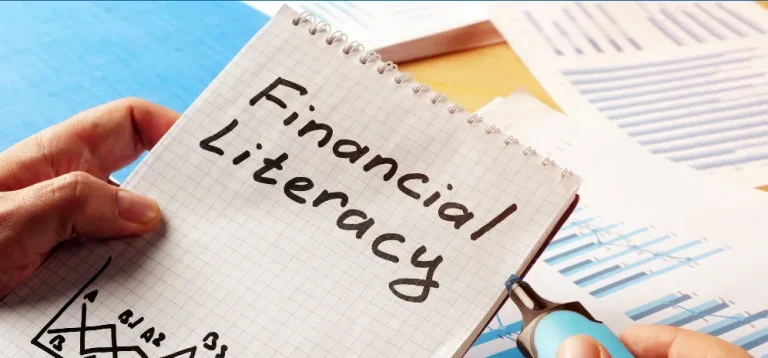The Key to Future Success: Teaching Personal Finance to Teens

Imagine a world where every young adult steps into the real world with a clear understanding of how to manage their money. A world where financial literacy is as fundamental as reading and writing. While this may sound like a utopian dream, it is entirely achievable through proactive education and engagement. Teaching students, particularly those between 12 and 18 years old, about personal finance is more than just a lesson in money management; it’s a lesson in life skills, responsibility, and independence.
Building a Strong Foundation
Let’s take a walk through a typical high school curriculum. Students learn complex algebraic equations, the intricacies of historical events, and the laws of physics. While these subjects are undoubtedly valuable, there’s often a glaring omission: practical financial education. The absence of personal finance in the curriculum is like building a house without a foundation. Without a basic understanding of how to manage money, all other knowledge can seem less relevant in the face of real-world financial challenges.
Consider Saanya, a 17-year-old high school senior. She excels in her studies, participates in extracurricular activities, and is preparing for college. However, Sarah’s first encounter with a credit card offer leaves her puzzled. She doesn’t understand interest rates, minimum payments, or credit scores. This gap in her education could lead to financial missteps, debt, and stress. By integrating personal finance education into the curriculum, Saanya and her peers can avoid these pitfalls and navigate their financial futures with confidence.
The Power of Early Financial Education
Teaching personal finance to young students instills habits that last a lifetime. The earlier children learn about money management, the more likely they are to develop healthy financial habits. For example, understanding the importance of saving can begin with something as simple as a piggy bank for younger children and evolve into savings accounts and investment discussions for teenagers.
Take the story of Manish, a 14-year-old who received a piggy bank from his parents. They encouraged him to save a portion of his allowance every week. By the time Manish turned 18, he had not only developed a habit of saving but also opened a savings account and started investing in stocks. His early financial education empowered him to think long-term and make informed financial decisions.
Real-Life Skills Through Simulations
One effective method to teach personal finance is through real-life simulations. Schools can create mock scenarios where students budget, save, and invest virtual money. These exercises not only make learning interactive and fun but also provide a safe environment to make mistakes and learn from them.
Imagine a classroom where students are given a virtual budget and asked to manage their expenses for a month. They must make decisions about rent, groceries, entertainment, and savings. Such simulations teach students the consequences of their financial choices without the real-world repercussions. They learn to balance wants versus needs, understand the importance of emergency funds, and see the impact of impulse buying.
Stories That Inspire
Personal finance education is enriched by real-life stories and analogies. For instance, consider the story of Anand, a young entrepreneur from Mumbai who started a small business selling handmade crafts at age 16. Anand’s story is a testament to the power of financial literacy. He learned to budget his earnings, reinvest profits, and market his products effectively. His journey not only highlights the importance of financial skills but also inspires others to see the potential of financial independence.
Analogies also work wonders in simplifying complex concepts. Explaining interest rates through the analogy of planting a tree can be incredibly effective. Just as a tree grows over time with care and patience, investments grow through the power of compound interest. This visual representation makes the concept easier to grasp and remember.
- Addressing Common Misconceptions
One prevalent misconception is that teens should solely focus on academics and leave financial education for when they start earning. This couldn’t be further from the truth. In fact, studies have shown that financial education can improve overall academic performance. The skills acquired through learning about personal finance, such as critical thinking and problem-solving, are highly transferable to other subjects.
By integrating financial literacy into their education, students develop a more holistic approach to learning. They gain practical skills that not only prepare them for real-world challenges but also enhance their academic abilities. For instance, understanding how to budget requires analytical skills that can be applied to math, while learning about investments involves critical thinking that is beneficial in science and economics.
Moreover, early financial education empowers teens to make informed decisions, fostering independence and responsibility. Waiting until they start earning to teach financial literacy can result in missed opportunities to build a strong financial foundation during their formative years.
Addressing these misconceptions helps pave the way for a more comprehensive and effective educational experience, preparing young people to navigate both their academic and financial futures with confidence.
- Creating a Culture of Financial Literacy
Creating a culture of financial literacy begins at home but must be reinforced in schools. Parents play a crucial role in modelling good financial behaviour, but educators have the opportunity to build on that foundation and introduce structured learning.
Schools can host financial literacy workshops, bring in guest speakers from the financial industry, and integrate financial topics into subjects like mathematics and social studies. A comprehensive approach ensures that students receive consistent messages about the importance of financial literacy.
- The Role of Technology
In today’s digital age, technology plays a vital role in financial education. There are numerous apps and online platforms designed to teach personal finance in an engaging and interactive way. Gamified learning experiences can make financial concepts accessible and enjoyable for young learners.
For example, apps like “Good Budget, Wally, Walnut ” allow teenagers to set savings goals, track their progress, and learn about investing in a fun, interactive manner. These tools complement traditional education and provide real-time feedback, helping students understand their financial habits and how to improve them.
- Financial Confidence and Independence
The ultimate goal of teaching personal finance to young students is to build financial confidence and independence. When students understand how to manage their money, they are less likely to fall into debt and more likely to achieve their financial goals. They can navigate the complexities of student loans, credit cards, and rent payments with ease.
Think about Riya, an 18-year-old who took a personal finance course in high school. When she moved out for college, she confidently managed her budget, understood her financial aid package, and avoided unnecessary debt. Her financial education gave her the confidence to make informed decisions and the independence to manage her own finances.
_____________
Conclusion
Teaching personal finance to young students, especially those aged 12-18, is not just about imparting knowledge; it’s about empowering the next generation with the skills and confidence to navigate their financial futures. Through real-life simulations, inspiring stories, and practical lessons, students can develop a strong foundation in financial literacy.
As we draw to a close on why personal finance education is crucial for young students, it’s important to reflect on the insights from the “Mutual Funds Sahi Hai” campaign. This initiative has been instrumental in raising investor awareness and demystifying the complexities of mutual funds for the average person. It teaches us that financial literacy is not just about managing day-to-day expenses but also about understanding investments and planning for the future. By instilling these lessons early on, we empower our youth to make informed decisions, recognize the value of long-term investments, and cultivate a habit of financial discipline.
Consider the words of Warren Buffett:
“The more you learn, the more you earn.”
By teaching personal finance to our young students, we are not just educating them; we are equipping them with the tools to build a secure and prosperous future. Financial literacy is the key to unlocking their potential, and with this knowledge, they can confidently navigate the financial landscape and achieve their dreams.
Parents and educators must work together to ensure that financial education is a priority. By doing so, we can create a financially literate society where young adults are equipped to make informed decisions, achieve their goals, and contribute positively to the economy.
Let’s make financial education a priority and set our children up for success. The journey to financial confidence and independence begins with the right education. Let’s take that step today.
Read more-The Power of Compounding: Unlocking Long-Term Financial Growth
Author : Gaurav Suri



